Tokens at the intersection of crypto and AI have ballooned to a market cap of $9.2 billion.
If you see startups mashing two of the hottest tech trends together – AI and crypto – you might be forgiven to think they’re merely riding the buzzword wave. But is there something of actual substance at that intersection?
Investors from CoinFund, Plaintext Capital and Archetype, who have all backed high-profile, AI-adjacent crypto projects, say yes.
Investments in decentralized AI projects come on the heels of last month’s captivating saga at OpenAI where the company’s board fired CEO Sam Altman only for him to regain his post days later.
To have Varun Mathur, an entrepreneur working on a decentralized AI solution, tell it, the drama around OpenAI’s leadership revealed a startling degree of power held by very few people.
“It turned out there were just two or three people who are making foundational decisions, which impact all of us as humans,” he said, highling that OpenAI is a $100B company used by hundreds of millions.
There is a huge amount of money and influence at stake. OpenAI even created a new kind of entity called a “capped profit” company in 2019. This was in order to prevent itself from becoming too powerful in its mission to develop artificial general intelligence.
Compute is Key
Altman has had so much confidence in OpenAI that he said it was “hopeless” to compete with the company’s foundational AI models earlier this year.
It’s too early to tell whether Altman is correct, but decentralized AI will certainly try to compete with its centralized counterpart.
One key potential advantage for decentralized AI lies in compute, said Jake Brukhman, co-founder and CEO of CoinFund. Computational resources, or “compute,” are used to train the models which underlie products like ChatGPT.
“One of the things that Web3 will do, and is currently doing, very fundamentally in this space is just democratize compute,” he told The Defiant. “Every single item on the OpenAI roadmap is bottlenecked by compute.”
Start for free
Coinfund led a seed round of Gensyn, a protocol which rewards participants for providing compute in March 2022. The firm again invested in the project in an a16z-led round in 2023.
NVIDIA’s Power
Demand for compute has driven stock for companies like NVIDIA, which provides hardware and software critical to AI’s development, to nearly triple this year and become the world’s sixth most valuable company.
“NVIDIA decides who gets compute and the first people that get access to it are Microsoft and Google and OpenAI and so on,” Brukhman said. “If you’re an individual researcher, you know, tough luck.”
Currently, the compute required to develop a cutting edge model is extremely expensive — Altman said that GPT-4, the model behind ChatGPT’s current pro version, cost $100M to train.
That’s a huge barrier for entry for researchers or entrepreneurs looking to develop models of their own, leading to concerns that a handful of well-capitalized entities will come to dominate the AI space.
Proprietary Models
These concerns have been voiced both within the crypto community, by the likes of Vitalik Buterin, and outside of it, by people like the recently doxxed Twitter account Beff Jezos, who founded the effective acceleration (e/acc) movement.
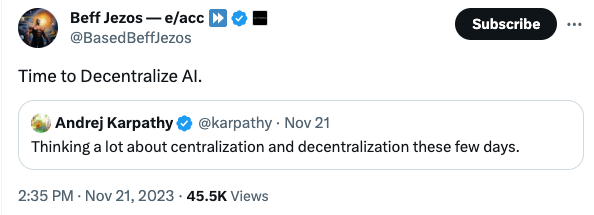
Mathur, the prominent CEO and co-founder of a “peer-to-peer intelligence network,” called Hyperspace, also believes blockchains can help decentralized AI.
“The AI industry is moving exceptionally fast and [is] exceptionally ambitious,” he told The Defiant. “What we’re trying to do at Hyperspace is to provide a fundamental decentralized alternative to OpenAI itself.”
Mathur released a paper outlining Hyperspace’s design in late November. A point of emphasis of the design, which the CEO characterizes as “BitTorrent-like,” is that a world with lots of open-source models is a safer one than a world where the most influential models are proprietary.
Indeed, while some models, like the Meta-developed Llama 2 series, are open-source, the top nine models, according to a scoring method called Elo, are proprietary. GPT-4 is one of those leading models.
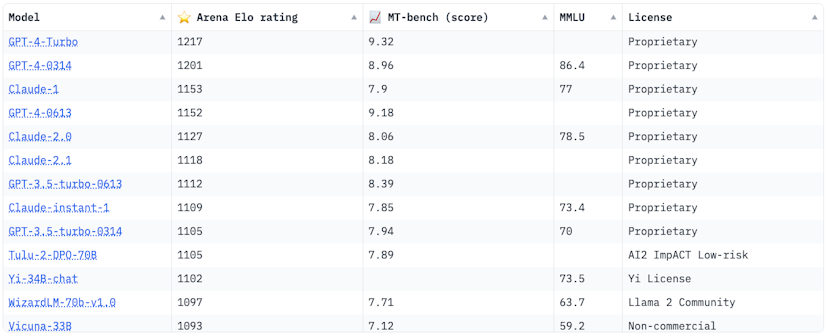
Crypto-AI Tokens
Traders are betting on the crypto-AI mashup, pushing demand for tokens to feverish highs. Market cap of AI-related tokens has surpassed $9 billion this year, according to CoinGecko.
TAO, RNDR, and FET are the largest coins.
TAO, the token for Bittensor, a project which acts as an infrastructure layer to distribute any number of underlying AI models, has ripped to a market capitalization of $1.9B after its mainnet launched in March.
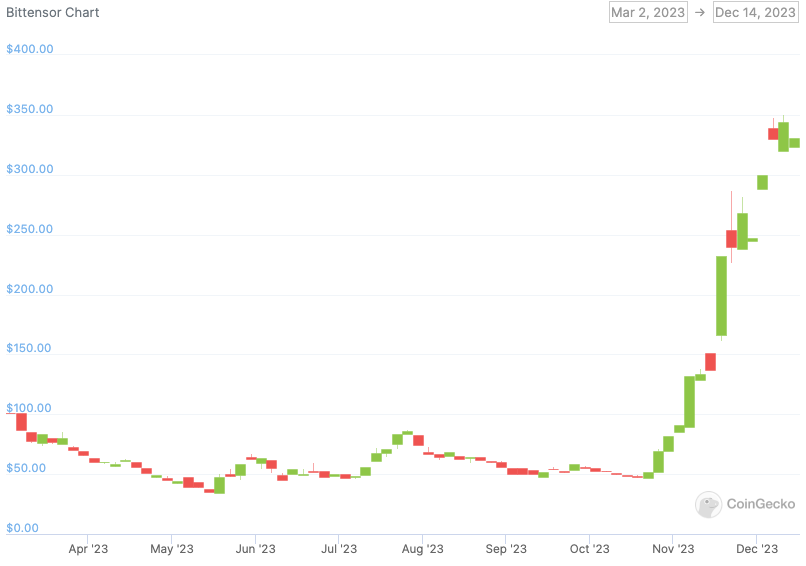
In one example of the complexity that is the crypto-AI space, Bittensor operates as more of a facilitator of AI solutions, rather than developing solutions itself.
“Bittensor is a hydra,” Phil Bonello, an investor at Plaintext Capital who previously was director of research at Grayscale, told The Defiant.
“If at any point GPT-4 starts to degrade in performance or censor any of the outputs that are coming out then that model will drop down in rank,” he said. “And the new model will come up and be king.”
RNDR, a token offered by the graphical processing unit (GPU) marketplace Render, has also gained in price by a factor of nine year-to-date. RNDR now has a market capitalization of $1.36B as the project inked its partnership with io.net last month. Io.net itself also partnered with Filecoin as it also looks to offer startups decentralized computing resources.
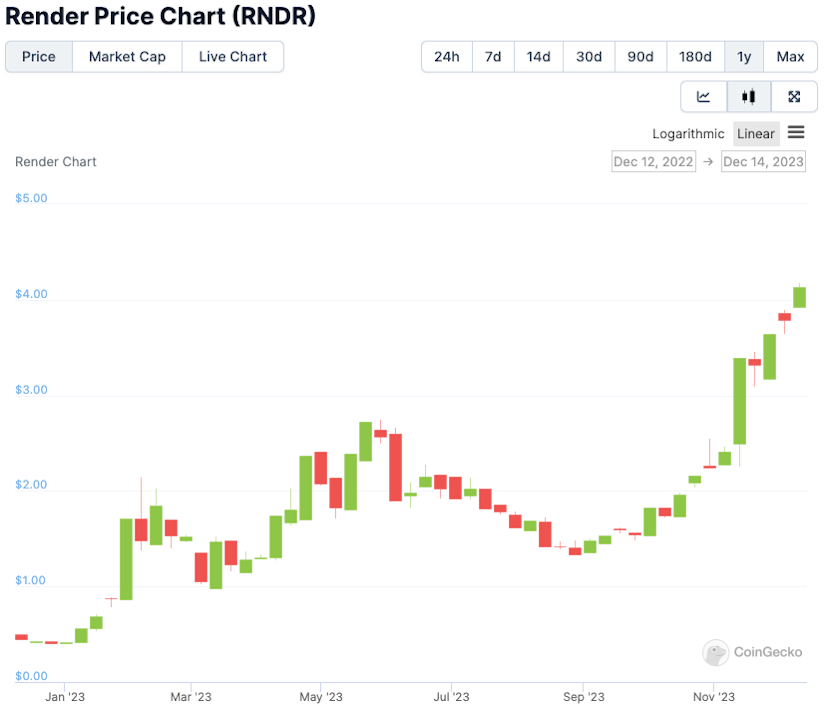
And FET, the token of the decentralized marketplace for AI agents called Fetch.ai, has had its own jump of 600% in the last year to reach a $500M-plus market capitalization.
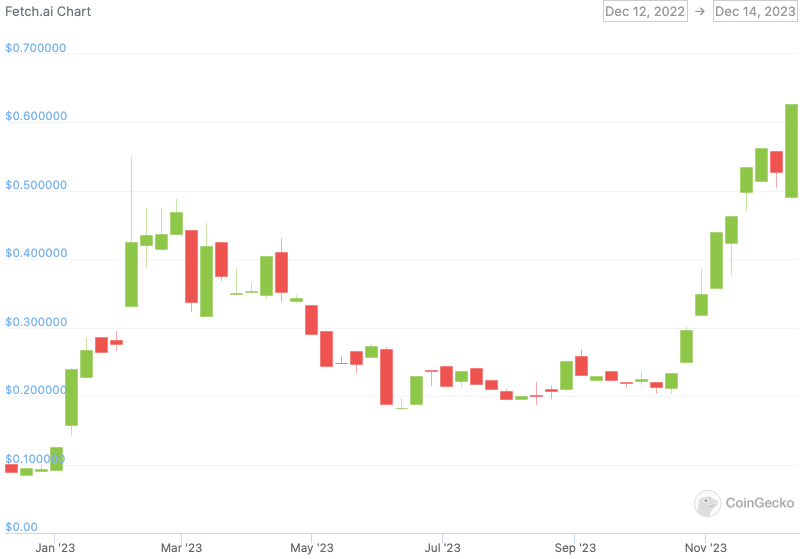
Token-less
That said, decentralized systems don’t necessarily have to have a token.
“My view is that 99% of decentralized AI [will] actually happen in a token-less environment for this BitTorrent-like system,” Mathur said. “1% happens with a token-based environment where some people say ‘look, I want to provide a higher quality of service, because I want to earn these protocol rewards.”
There’s momentum in the private markets as well — Ritual, a decentralized computing project raised $25M from last month.
To be sure, wherever there’s hype and jargon, naive investors are going to be tempted to throw money at projects they don’t understand. Combining crypto and AI gives twice the buzzwords to bamboozle retail traders with, increasing the likelihood of some duds in the decentralized AI space.
Other Areas of the AI Stack
Looking forward, Brukhman is eyeing other elements of the AI stack.
The CoinFund CEO was one of Worldcoin’s earliest investors in February based on what the firm sees as the need for proof-of-personhood. Now Brukhman is looking around different areas of AI — he said he’s looking at companies in the data sector and led a soon-to-be announced round in the space.
“If you have an AI assistant and you’re giving that assistant a lot of data, you want to own and permission the data,” he said.
Credit: Source link




